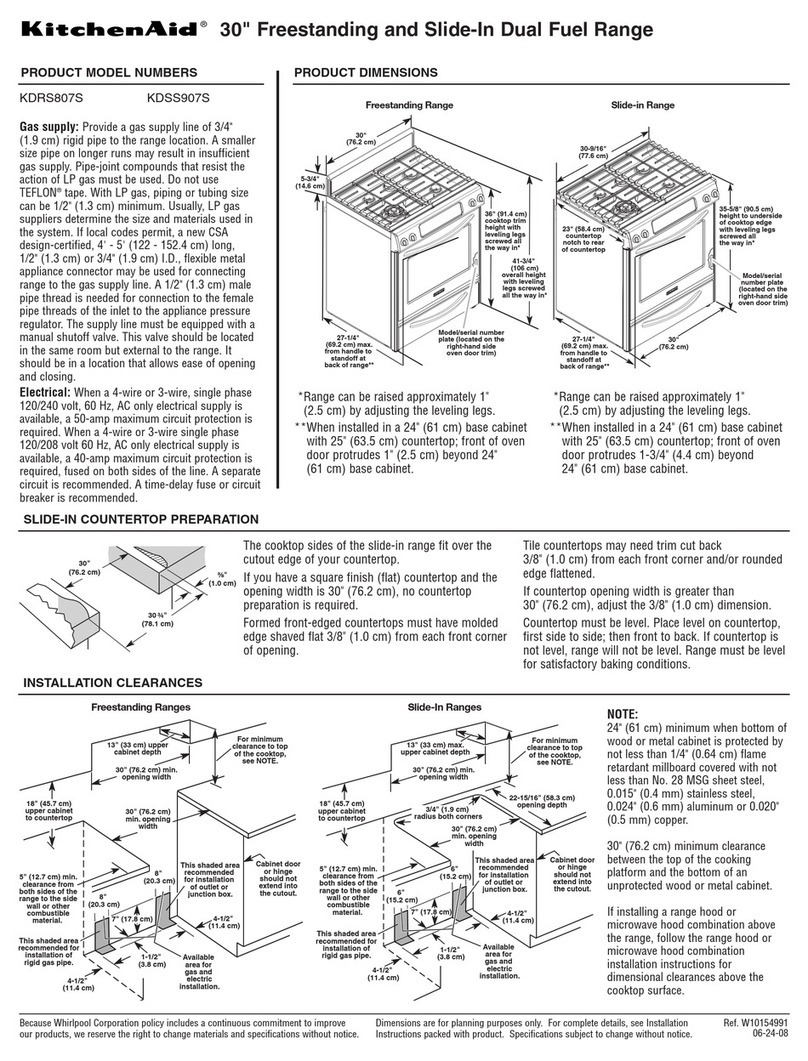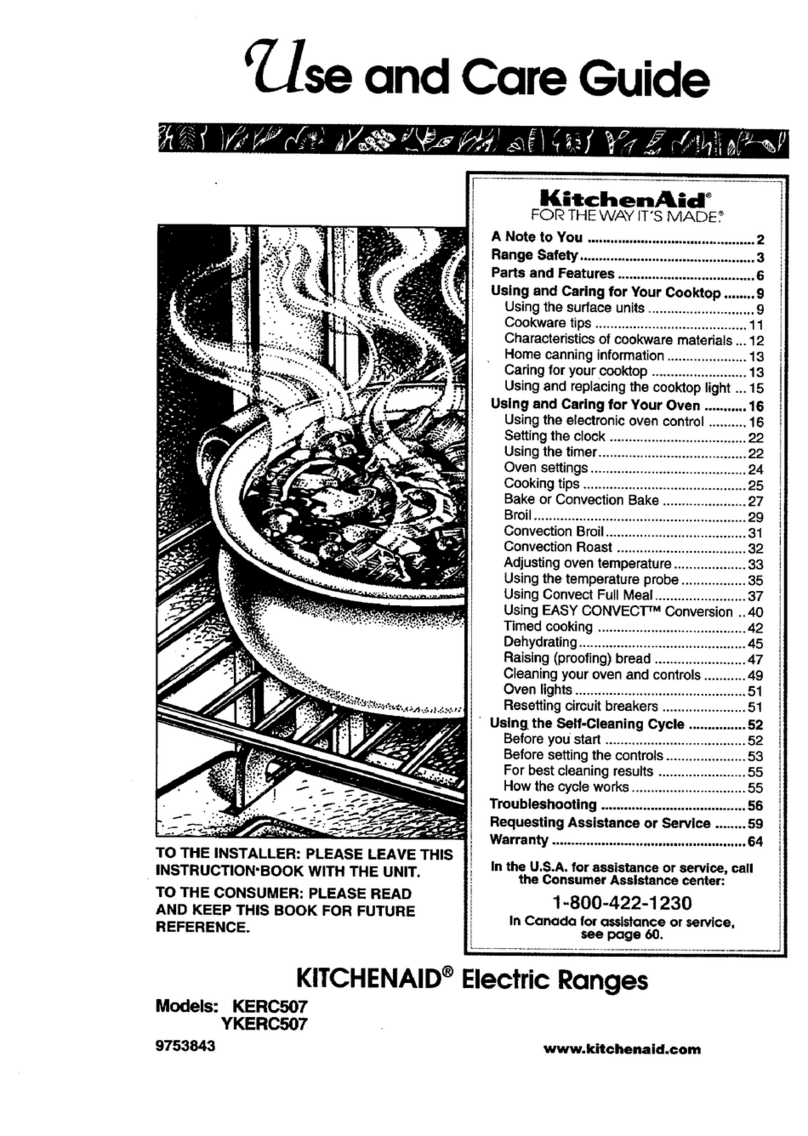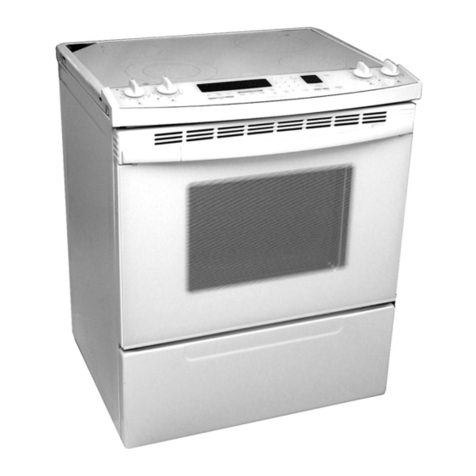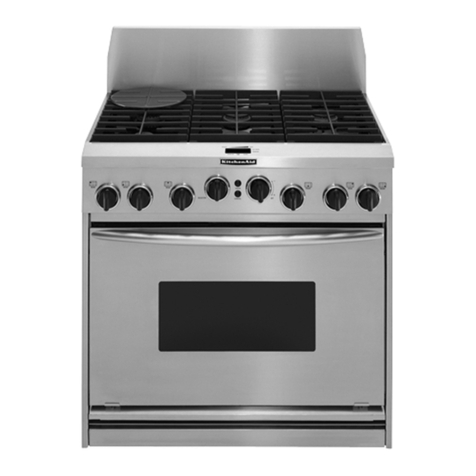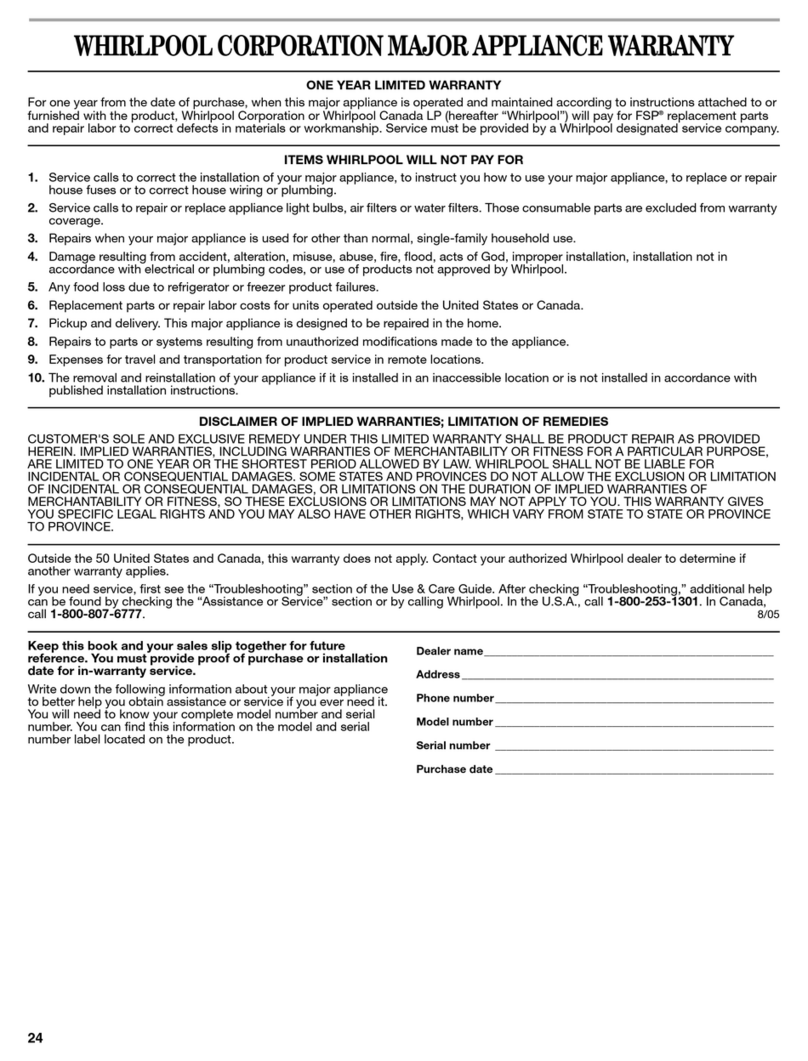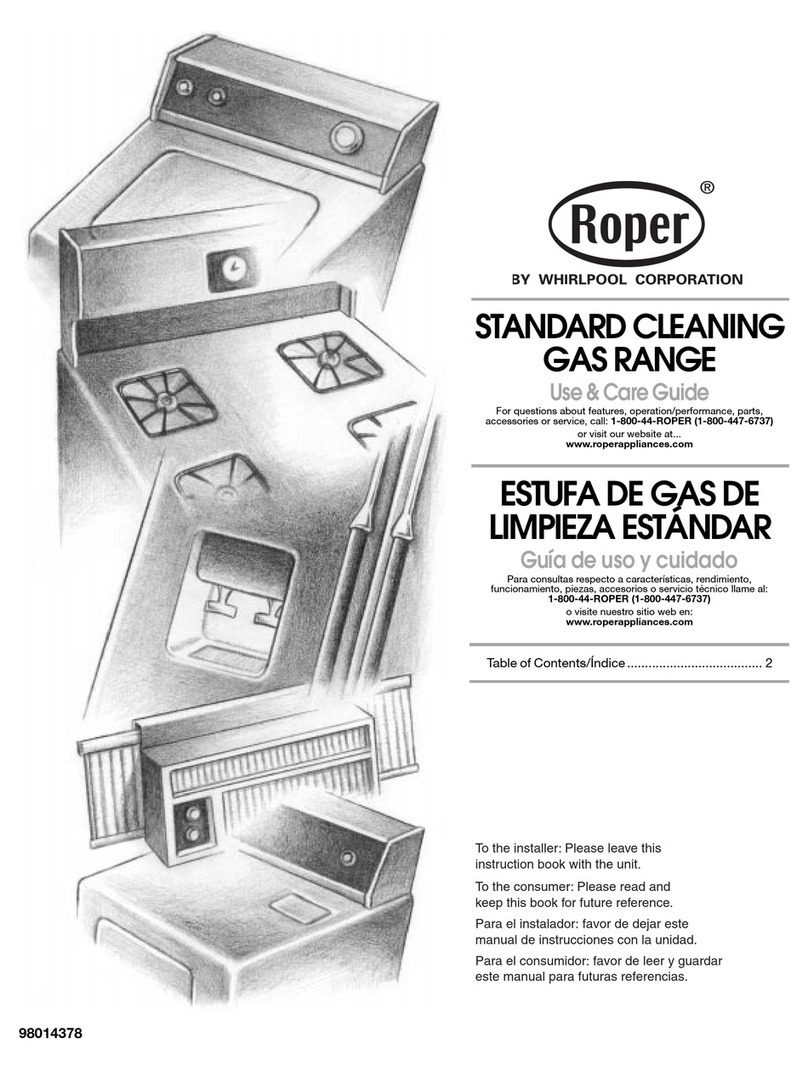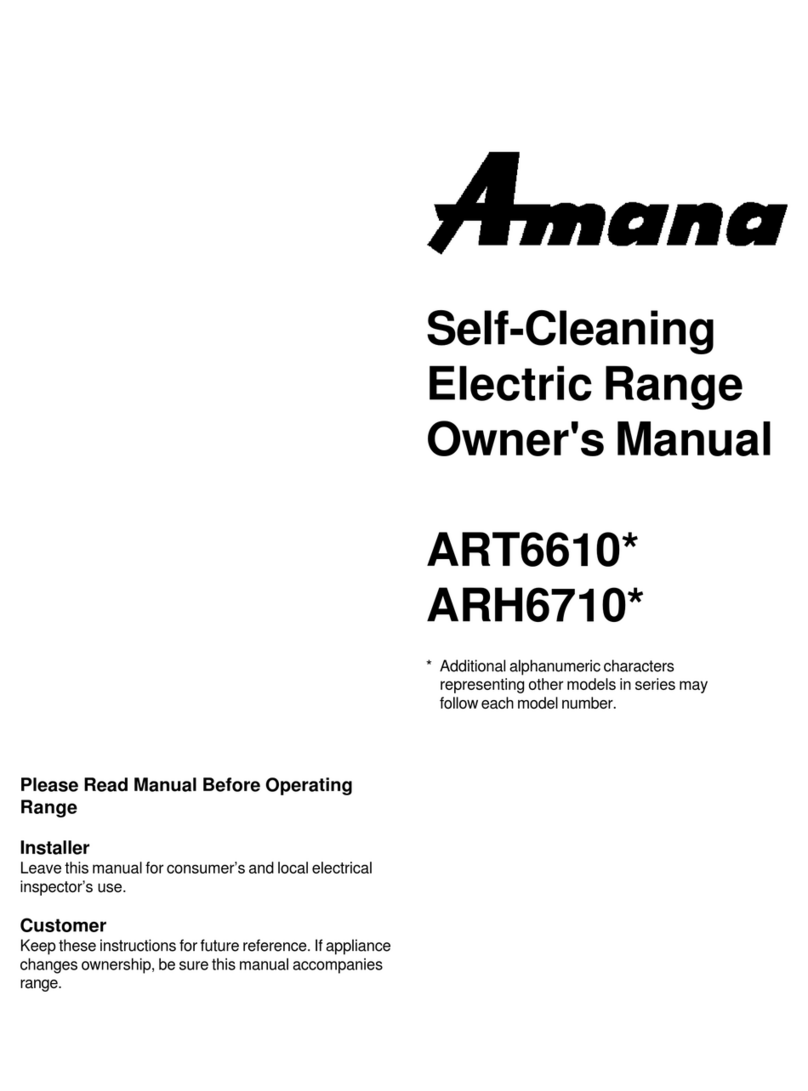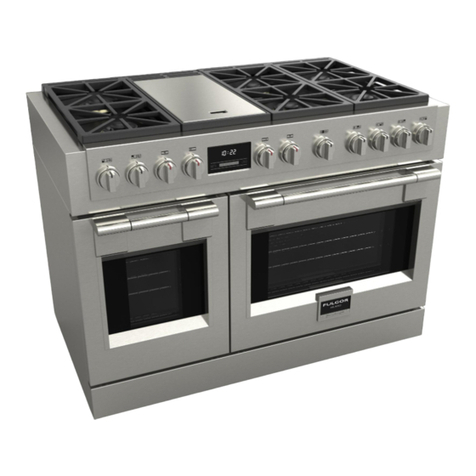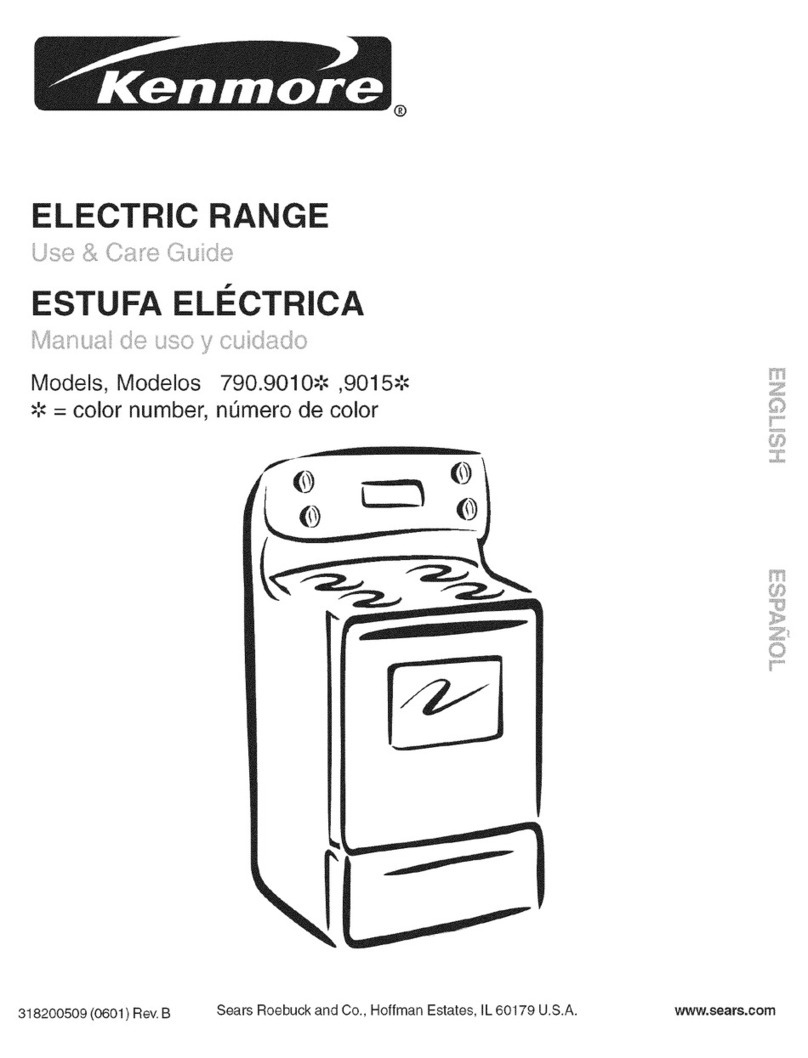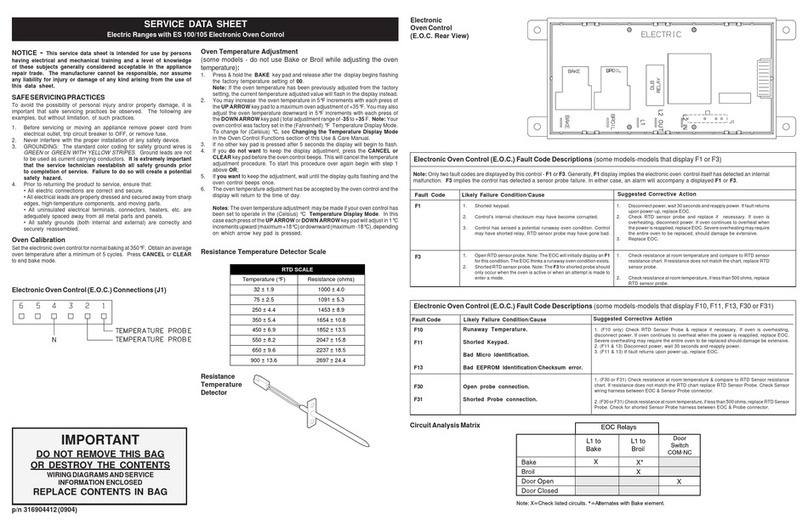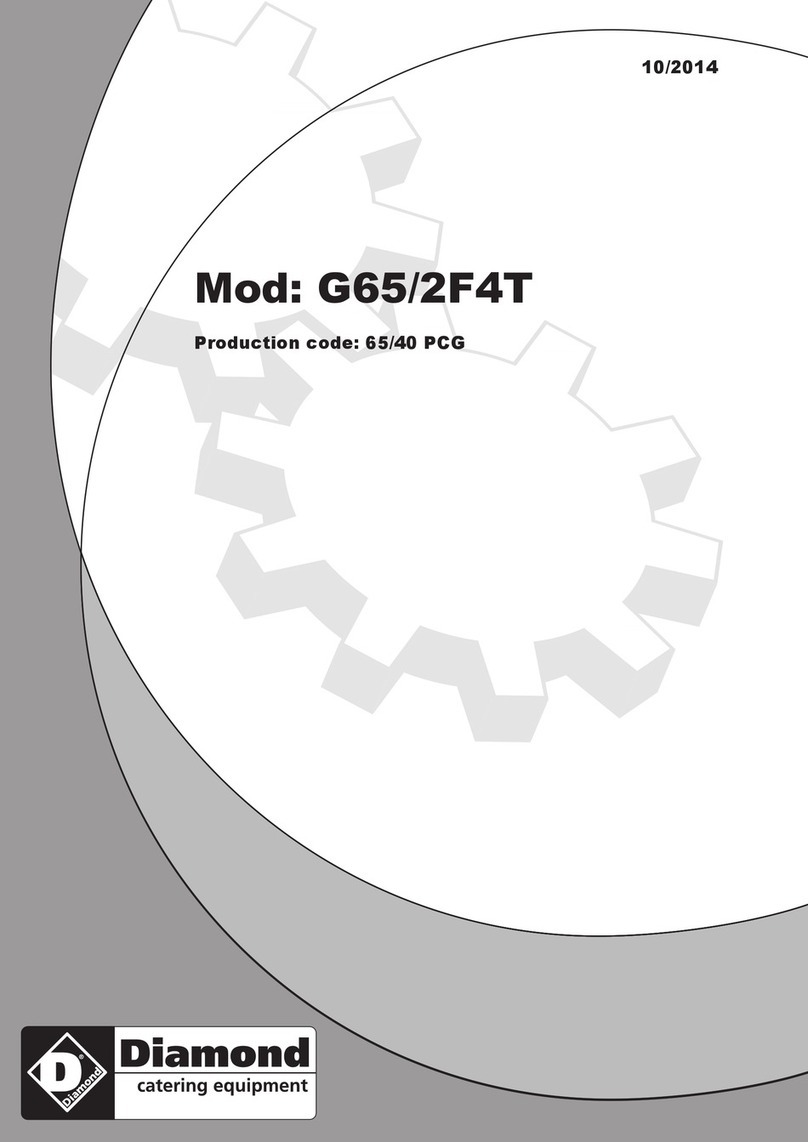Tools needed for
installation:
flat-blade
screwdriver or 5/l 6”
hand or electric drill
wood floor:
l/S” (3 mm) drill bit
concrete/ceramic floor:
3/16” (4.5 mm)
carbide-tipped
masonry drill bit
L.P. gas conversion
requires:
pin pick up (claw
attachment)
5/16” nut driver
Parts
supplied for
installation:
L 2-plastic
anchors
l
burner grates
and caps
l
vent cap
l
L.P. conversion
orifice spuds kit:
2 x #64 cooktop
2 x #69 cooktop
1 x #65 broil burner
(Bracket must be securely mounted to sub-floor.
Thickness of flooring may require longer screws to
anchor the bracket to sub-floor.)
Gas supply
requirements
Observe all governing codes and
ordinances.
Fire Hazard
l
Range must be connected to a regulated
gas supply.
l
L.P. gas supply must Not exceed a
pressure of 14 inch water column. This
must be checked by a qualified
technician before installing the range.
L.P. gas must not be used unless L.P.
conversion kit has been installed.
l
Do Not use an open flame to test for
leaks from gas connections.
l
New, A.G.AJC.G.A.-design-certified,
flexible metal gas line connector should
be used when codes permit.
Failure to follow these instructions could
result in a fire, explosion or personal
injury.
IA
This installation must conform with
local codes and ordinances. In the
. absence of local codes installations
must conform with American National Standard,
National Fuel Gas Code ANSI Z223.1- latest
edition (**, see Panel A) or CAN/CGA-B1 49
latest edition (***, see Panel A) installation
codes.
le
Input ratings shown on the
. serial/rating plate are for elevations up
to 2,000 feet (609.6 m). For elevations
above 2,000 feet (609.6 m), ratings are reduced
at a rate of 4% for each 1,000 feet (304.8 cm)
above sea level. (Not applicable for Canada.)
El
This range is equipped for use with
n Natural gas. It is design-certified by
A.G.A./C.G.A. for Natural and L.P. gas
with appropriate conversion. The model/serial
rating plate, located on the oven frame behind
the drawer, has information on the type of gas
that can be used. If this information does not
agree with the type of gas available, check with
your KitchenAid dealer. Conversion to L.P. gas
requires installation of the kit included in the
parts package. This conversion must be done
by a qualified technician.
ID.I
Provide a gas supply line of 3/4”
(1.9 cm) rigid pipe to the range
location. A smaller size pipe on long
runs may result in insufficient gas supply. Pipe-
joint compounds appropriate for use with L.P.
gas must be used. With L.P. gas, piping or
tubing size can be l/2” (1.3 cm) minimum. L.P.
gas suppliers usually determine the size and
materials used on the system.
El
If local codes permit, a new
A.G.A./C.G.A. design-certified, 4-5
foot (122 -152.4 cm) long. l/2”
(1.3 cm) or 3/4” (1.9 cm) I.D.,‘flexible metal
appliance connector is recommended for
connecting this range to the gas supply line. Do
Not kink or damage the flexible tubing when
moving the range. A l/2” (1.3 cm) male pipe
thread is needed for connection to pressure
regulator female pipe threads.
El
The supply line shall be equipped with
an approved shutoff valve. This valve
should be located in the same room.
but external to the range, and should be in a ’
location that allows ease of opening and
closing. Do Not block access to shutoff valve.
El
If rigid pipe is used
line, a combination of pipe fittings
must be used to obtain an in-line
connection to the range. All strains must be
removed from the supply and fuel lines so
range will be level and in line.
IH
The regulator setting must be checked
n
at a minimum of 1 inch water column
above the manifold oressure. The inlet
pressure to the regulator should be as follows
for operation:
Natural gas:
Manifold pressure - 5 inches
Maximum pressure - 14 inches
L.P. gas:
Manifold pressure - 10 inches
Maximum pressure - 14 inches
(1.Line pressure testing:
Testing above l/2 psi (gauge)
The range and its individual shutoff
valve must be disconnected from the gas supply
piping system during any pressure testing of
that system at test pressures greater than l/2
psig (3.5 kPa).
Testing at l/2 psi (gauge) or lower
The range must be isolated from the gas supply
piping system by closing its individual manual
shutoff valve during any pressure testing of the
gas supply piping system at test pressures
equal to or less than l/2 psig (3.5 kPa).
Electrical
requirements
Electrical Shock Hazard
l
Electrical ground is required on this
appliance.
l
Do Not ground to a gas supply pipe.
l
Do Not modify the power supply cord
plug. If it does not fit the outlet, have a
proper outlet installed by a qualified
electrician.
. Do Not use an extension cord with this
appliance.
l
Do Not have a fuse in the neutral or
grounding circuit. A fuse in the neutral or
grounding circuit could result in an
electrical shock.
l
Check with a qualified electrician if you
are in doubt as to whether the appliance
is properly grounded.
Failure to follow these instructions could
result in death or serious injury.
If codes permit and a separate grounding
wire is used, it is recommended that a
qualified electrician determine that the
grounding path is adequate.
A 120-volt, 60-Hz, AC-only, 15-ampere, fused
electrical circuit is required. A time-delay fuse or
circuit breaker is recommended. It is
recommended that a separate circuit serving
only this appliance be provided.
Electronic ignition systems operate within wide
voltage limits, but proper grounding and polarity
are necessary. In addition to checking that the
outlet provides 120-volt power and is correctly
grounded, the outlet must be checked by a
qualified electrician to see if it is wired with
correct polarity.
The wiring diagram is included in the literature
package. The wiring diagram can also be found
on the back of the range.
Note:
The metal chassis of the range MUST
be earth-grounded in order for the control panel
to work. If the metal chassis of the range is not
earth-grounded, NO keypads will operate.
Check with a qualified electrician if you are in
doubt as to whether the metal chassis of range
is earth-grounded.
Recommended grounding method
For personal safety, this appliance is equipped
with a power supply cord having a 3-prong
grounding plug. To minimize possible shock
hazard, the cord must be plugged into a mating
3-prong, grounding-type wall receptacle,
grounded in accordance with the National
Electrical Code, ANSVNFPA 70 - latest
edition(*, see Panel A) or CSA Standard C22.1,
Canadian Electrical Code, Part 1, - latest
edition( ***, see Panel A), and all local codes
and ordinances. If a mating wall receptacle is
not available, it is the personal responsibility and
obligation of the customer to have a properly
grounded, 3-prong wall receptacle installed by a
qualified electrician.
power
plug grounding
prong
3-prong
grounding-type
wall receptacle
J
Panel B



